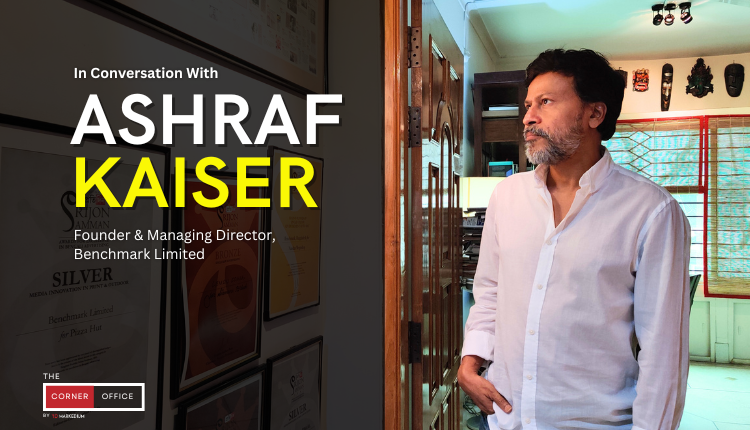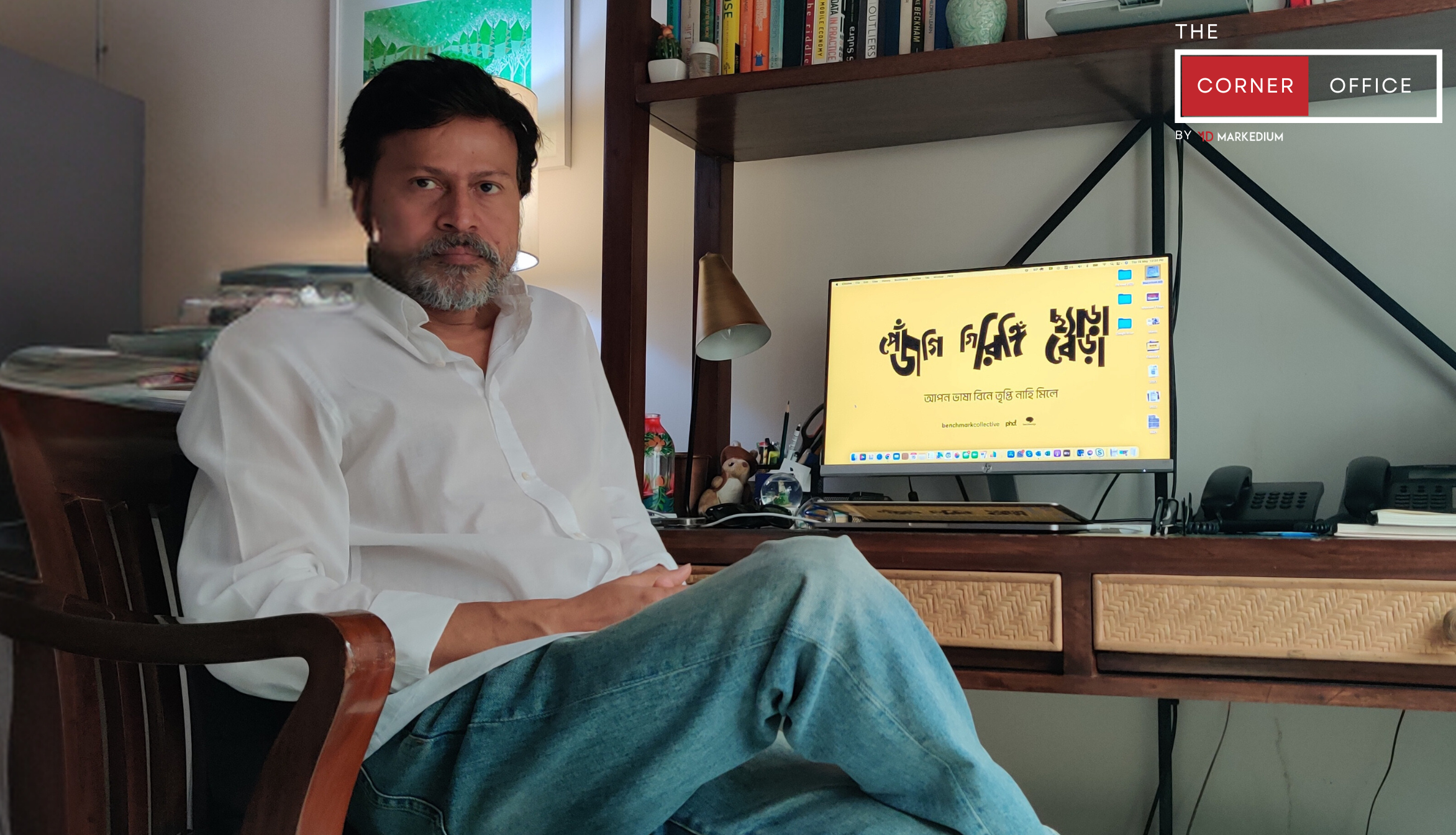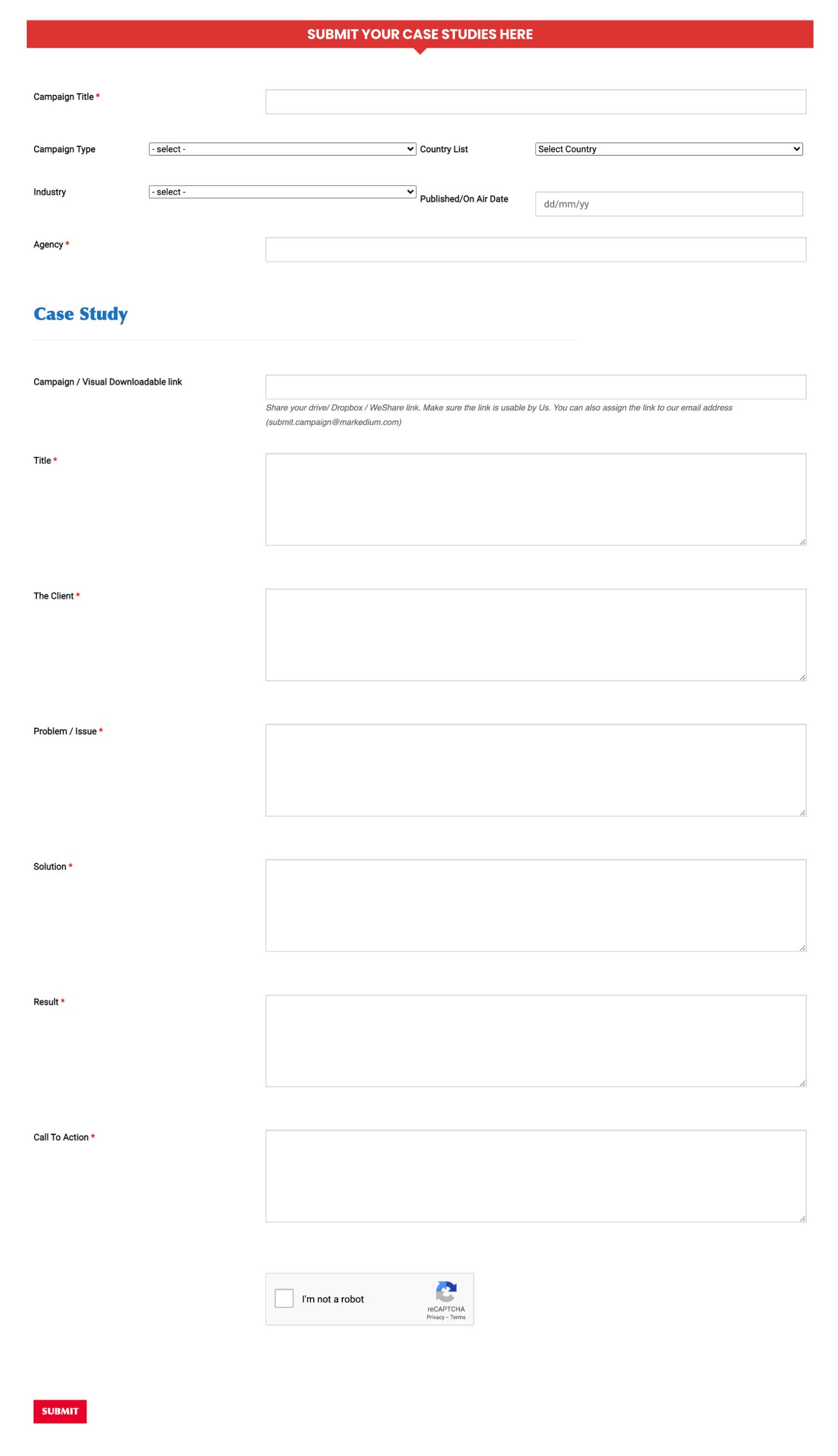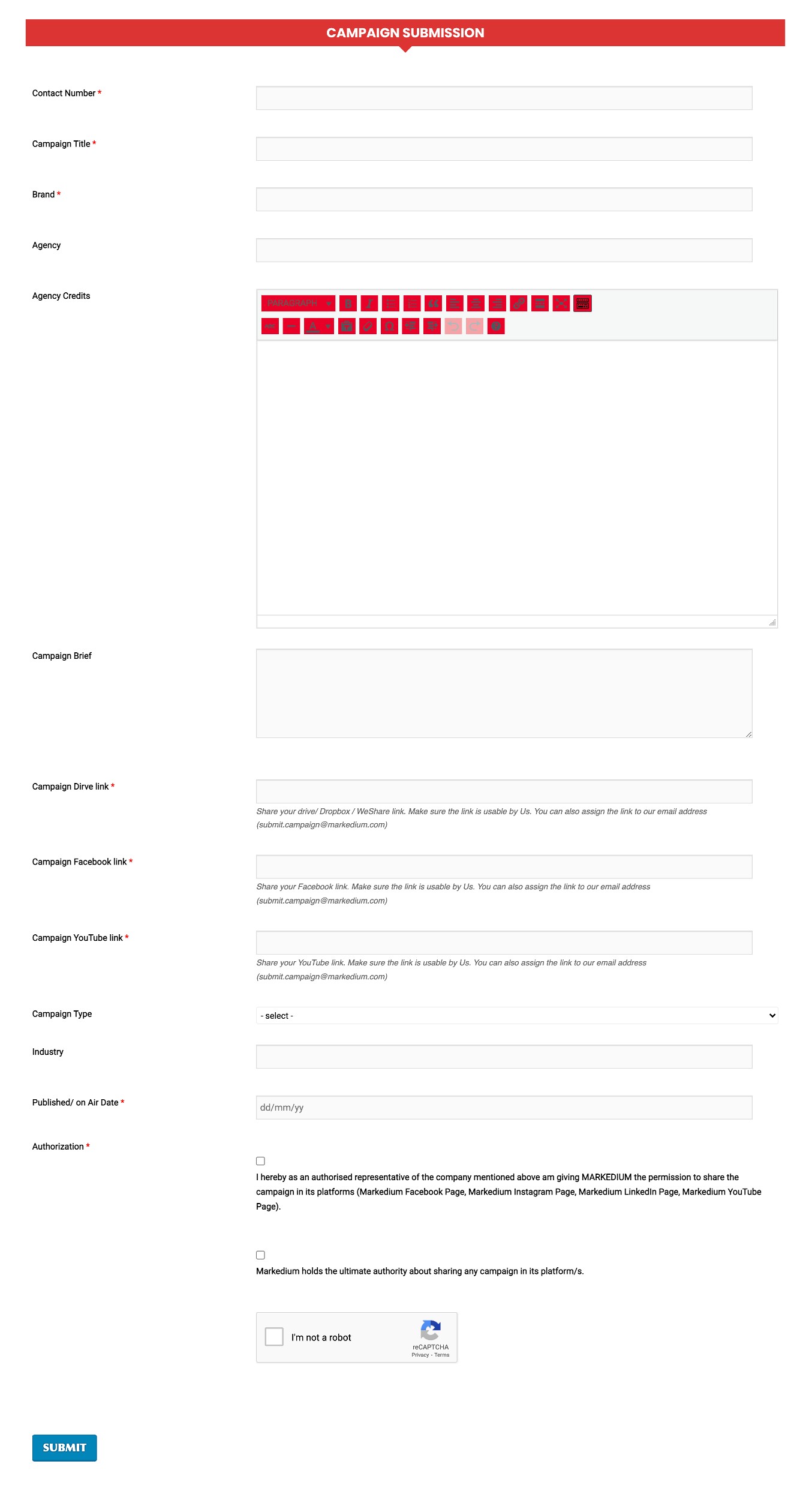
PR Isn’t Noise, Instead A Beautifully Crafted Grand Narrative | An Insightful Conversation With Ashraf Kaiser18 min read
For corporations and organizations, public relations (PR) has long been integral to successful communication strategies. Historically, PR has focused on creating press releases, managing crisis communications, and cultivating relationships with journalists.
However, the PR industry has evolved significantly in the digital era. This transformation has been driven by advancements in technology, societal changes, and shifts in the media landscape. While traditional media placement remains important, the advent of digital PR has been revolutionary.
Bangladesh, a rapidly expanding consumer market poised to become the ninth largest globally by 2030, has also witnessed PR’s pivotal role in driving business growth and fostering connections between brands and consumers.
Hence, in light of the industry’s dynamic nature, Markedium recently conducted an insightful conversation with Ashraf Kaiser, Founder and Managing Director of Benchmark Limited, the parent company of one of Bangladesh’s pioneering PR agencies. The objective was to decode the current state of the PR industry.
Through Ashraf Kaiser’s expert perspective, we explored the essence of public relations in the Bangladeshi market, assessed the growth and future of new media platforms, and discussed the industry’s trajectory over the next 5-10 years.
The following is a refined version of the interview transcript.
Markedium: Thank you for taking the time to speak with us today. To begin, we’d love to hear your perspective on what public relations truly means in this modern age!
Ashraf Kaiser: You’re welcome! So, what is PR?
Traditionally, advertising has been prevalent in our country, so we are familiar with it. For example, creating TV or newspaper ads. However, many people mistakenly equate PR with press releases. This misconception arose because ad agencies would traditionally distribute free press releases for companies. For instance, an agency for Lux would publish a press release about a Lux photo contest. This is ad hoc publicity for a brand or company, but PR is not just about press releases. In fact, press releases serve PR purposes because they are a tool to convey your statement to media outlets. However, as of 2024, Facebook has been around for 20 years, 80% of Bangladeshis have internet access, and our media consumption has grown significantly.
Twenty years ago, we might read the newspaper every morning and watch TV at night. That was our media consumption. Now, we read the newspaper in the morning and stay connected to the internet all day. For instance, if there’s a fire on Bailey Road, you know about it instantly. Our conversations change by the hour. I believe our media consumption has increased four to five times compared to before. We, the same people, read newspapers and stay connected to the internet all day. The internet combines all media forms—print, electronic, digital, and multimedia—because it encompasses everything.
Media consumption has increased significantly, and sometimes media users become more sophisticated than media owners. Media outlets have less control because the audience is ahead. Therefore, news outlets must become more polished, faster, and more accurate. They need to understand their positioning.
Given these changes, we can see how the business or economy of a country and its media industry have grown over the last 30-40 years. As a result, communication has evolved significantly. Traditionally, everything was considered advertising, and advertising is still a very effective and powerful communication channel. However, PR has expanded beyond that to include a broader range of strategic communication efforts tailored to today’s multifaceted media environment.
Markedium: Building on your insights, we’d like to delve deeper into a common confusion in the industry. Many people often conflate advertising and PR, or misrepresent them as the same thing. Could you share your perspective on the key differences between advertising and PR, especially given the evolving media landscape?
Ashraf Kaiser: Often, even those within our industry mis-define, misrepresent, and mis-practice it. This isn’t necessarily their fault; academically, these subjects are relatively new in our country.
Now, advertising creates desire, while public relations build credibility. Think of advertising as the process of making someone want a bottle of water within 30 seconds by creating an appealing message that sparks desire. For instance, consider the brand positioning of Close Up, which sells confidence. An ad might show someone confidently saying “I love you” to create that desire.
On the other hand, PR focuses on establishing credibility. Today’s generation is highly discerning when purchasing products or services. It’s not just about creating desire; consumers ask, “Is it credible? Should I trust this brand? Are they socially conscious? Do they harm the environment or exploit producers?” Advertising doesn’t always provide these answers.
PR addresses these concerns through content, experience, engagement, and credibility. More importantly, PR creates platforms where audiences can interact equally with the brand. This could be through community events, open Q&A sessions with the CEO, or other forms of direct engagement. PR is about building a connection, fostering dialogue, and creating a level playing field between the brand and its audience.
Globally, PR agencies have evolved from focusing solely on media relations to engaging with stakeholders in various sectors—society, community, business, and industry. They work on regulatory changes and stakeholder management. PR agencies have also become more creative, handling creative engagements for brands. Thinking creatively from a PR perspective provides a more robust and comprehensive approach than standalone ad hoc creative efforts. It helps in communication, stakeholder management, and building lasting relationships.
There’s still a gap between what we expect from PR agencies and what they should ideally be doing. While the industry is improving, there’s a long way to go.

Markedium: Usually in advertising, storytelling is utilized to create the desire and drive sales. However, in PR, storytelling is crucial as well. Given your long journey in the field and the increased media consumption, digital influence, and technological advancements, how has storytelling in PR evolved, and what changes are still needed?
Ashraf Kaiser: Absolutely. Whether it’s an ad agency, creative agency, or PR agency, storytelling is everything. For example, the first line of Benchmark PR’s credentials states, “the story of a storyteller.” We share our own stories with clients and the public. Storytelling encompasses a brand, a company, CSR initiatives, and ESG efforts. We often say, “Story is everywhere. You need to know how to capture it and how to tell it.” And that’s where the difference lies.
You mentioned that our media consumption has changed, which is entirely accurate. Previously, media outlets controlled what the audience would see or hear. Now, the audience decides what they want to consume. This shift has transformed everything. We now have regional content, local content, global content, and content tailored to various orientations—be it religious, non-religious, or different sexual orientations.
In our country, while media platforms and connectivity have evolved, storytelling has not kept pace. Even in reputable corporations, the importance of storytelling is often undervalued. Typically, the head of the department responsible for storytelling is a relatively junior executive. In contrast, top global companies like Apple, Amazon, Google, and Meta have numerous storytellers. They understand the importance of innovation and technology, and they employ talented individuals for storytelling, policy advocacy, and working with regulatory bodies.
In Bangladesh, corporate leaders and brand owners often underestimate the importance of storytelling. Globally, marketing is increasingly becoming about retail and personal interaction. Instead of traditional marketing, engaging in conversations and discussions with consumers is more effective. This change is reflected in the organizational structures where storytellers are given prominent roles, such as Chief Storyteller or Chief Brand Officer.
This shift occurs because sometimes a brand’s intangible value surpasses its tangible assets. However, growing and nurturing this value requires proper storytelling and branding efforts, which are often neglected in our market due to the high population and the reliance on FMCG products that sell without substantial branding or content crafting. Consequently, many brands fail to prepare for the future, connect with their audience, and create audience-owned brands.
Markedium: There’s a common misconception that PR is all about making noise—creating buzz around a news piece without much thought about the content’s substance. From your extensive experience, why do you think this perception that PR is just noise creation originated? And, why is Bangladesh still lagging? Why aren’t brands more proactive, even though consumers are ready? What is the mindset behind this inertia?
Ashraf Kaiser: First, let me clarify that I do not agree with the notion that PR is just noise. I believe there are three levels of engagement in PR.
The first level is the surface level, akin to casual conversations at a coffee shop. For example, Uber’s recent “Lost and Found” release on Markedium highlights the interesting items people leave behind and when they do so, adds a touch of entertainment. However, the key takeaway is how a responsible brand like Uber ensures you can retrieve your lost items. It tells the story of a responsible platform committed to its users.
Moving deeper, the next level is useful and insightful information. Three years ago, we worked with bProperty, an online property company, receiving 10-12 thousand daily queries about apartment rentals, sales, and purchases. We analyzed their extensive database to extract valuable insights such as preferred apartment sizes, locations, and price ranges in Dhaka. For instance, we found a high demand in Mirpur due to the new metro rail and in Uttara due to its growing community, with a shift from three-bedroom to two-bedroom apartments as families get smaller. This data, when released, was picked up by BBC, highlighting its merit and the value of Bproperty’s analytics. This is an example of how PR can leverage data to provide insightful and impactful information that gains significant media attention without paid campaigns.
The third and deepest level involves credible and sustainability-focused information, which often creates long-term reputation and trust for a company. PR excels in this area by building credibility and sustainable practices that are hard to achieve through other channels. For instance, when companies launch IPOs, they seek subscriptions, which can only be achieved through effective communication about their business prospects.
In summary, PR is not about creating noise but about positioning companies with useful, insightful, and credible information. By doing so, PR builds trust, credibility, and reputation, which are crucial for any company’s success.
Markedium: Using bProperty as an example, we see that there are companies in Bangladesh working with consumer behavior data and possessing extensive datasets. However, it is unfortunate that Bangladeshi companies are often reluctant to share their data. For instance, if we want to understand U.S. e-commerce behavior, I can easily find detailed reports from Amazon. However, in Bangladesh, such data is not readily available. Why is there such hesitation among Bangladeshi brands to publish their data? What is your perspective on this reluctance from a brand’s point of view?
Ashraf Kaiser: Culturally, we are hesitant to publish data. We believe in maintaining secrecy. Many companies do not realize that publishing data can make them appear smarter, and more transparent, and even contribute to societal change. However, new-generation tech-driven companies see data publication as a significant asset. For example, Uber shares data effectively. Similarly, the metro rail could also provide valuable data.
The private sector often mirrors the government’s tendency to keep data hidden, but they also lack the capability to understand and translate the importance of data. They often do not see the potential stories that can be derived from data. For instance, historically, Bangladesh was a tea-loving country, but now Dhaka is filled with coffee shops.
Are we shifting from a tea to a coffee culture? This is a fascinating topic and could even be a series on Markedium. Analyzing a city’s drink preferences can reveal insights into its people’s moods, thinking patterns, and social behaviors.
Brands like Nescafé or Ispahani could benefit from investing in data analysis to create such stories. When discussing with clients, even with Nescafé, we’ve suggested that predicting trends through data can establish them as thought leaders rather than followers. Our local and international brands need to understand the importance of publishing data effectively. They should not just release raw data but present it as a predictive story.
Our brands haven’t yet reached this level of data utilization and storytelling, but they need to realize its potential and start leveraging their data in meaningful ways.
Markedium: As we move towards new platforms and media vehicles like bite-sized content, we’ve seen a significant rise in the use of social media platforms such as TikTok. These social media platforms are becoming news vehicles, but questions about their authenticity and credibility remain.
I would like to hear your detailed thoughts on this industry. Where do you think this industry is heading? What steps should be taken to address these issues, and what potential threats might we face?
Ashraf Kaiser: Firstly, it’s important to note that the genre of bite-sized media has been around in other countries, including India, for the past 15-20 years. As our media platforms continue to grow, their growth will likely accelerate because it aligns well with our consumption habits, particularly on mobile devices.
Currently, in Bangladesh, I see many people crafting and presenting news from outlets like Daily Star, Business Standard, and Dhaka Tribune in a concise and appealing manner. There’s nothing wrong with this approach, but it’s essential to consider whether there’s an opportunity for these platforms to create and break their news, offering exclusive content that can only be found on their platform. This aspect of journalism can help establish an organic identity.
If these platforms can develop editorial direction, news creation, gathering, and presentation capabilities, they will become more unique. Additionally, since this is a business, finding sustainable revenue streams is crucial.
As a PR agency, we don’t advise clients to seek unnecessary headlines or praise that readers may not believe. Instead, we help them present their stories objectively and effectively. Many companies lack storytellers or content crafters, which is where bite-sized media can play a significant role. The future of bite-sized media looks promising, with several avenues to explore, including revenue generation and value addition with different content forms.
I believe it’s time for a mature conversation about this level of media. Our traditional habits are changing, and corporations must decide to be early movers, adapting quickly to remain relevant in society.

Markedium: We would like to delve into a topic we touched on earlier—Generation Z. This demographic is one of the reasons new types of media are emerging. From your perspective, how are brands and PR agencies in Bangladesh adapting their storytelling strategies to be Generation Z-centric? If we need to create storytelling based on this new audience, what should brands or new media platforms prioritize?
Ashraf Kaiser: We work with Coke Studio Bangla as their PR agency, and I think this example will clarify the concept well, as music is a universal favorite. With Coke Studio Bangla, we’ve focused on creating fusion by blending traditional folk music with modern instruments and integrating local and international talents. The goal is to make this appealing to Generation Z—the younger generation.
To answer your question, the first step is to develop a grand narrative. For Coke Studio Bangla, we start by defining a grand narrative for each season. The second step is to think about how to express this narrative through content, whether it be music, sports, or useful information. Third, it is crucial to determine how to present this content across traditional, digital, and social media.
The fourth step is engagement. Coke Studio Bangla has a vast fan base with thousands of creations that fans have made. A great brand helps explore and express others’ creativity. The success of Coke Studio Bangla is evident from its incredible impact on YouTube and the enthusiastic response from media and social media when a new song is released. This example shows how to create a grand narrative, develop content, engage with media, and connect with creators.
Connecting with Generation Z involves these five steps. Additionally, two more factors are crucial. Firstly, it’s a misconception that they don’t appreciate our culture—they do but in their own way. The challenge is to understand and present it from their perspective. Secondly, unlike previous generations, they are conscious of climate change and equal rights. They want to see brands that respect and promote art, culture, and sustainability.
By focusing on these areas—having a powerful idea, a grand narrative, compelling content, engagement, and sustainability—you can effectively connect with Generation Z.
Markedium: As we near the end of our discussion, I’d like to touch on an observation from the marketing perspective—the growth of LinkedIn. Socially, we often focus on the growth of Instagram, but data shows that LinkedIn’s growth is larger, surpassing even Facebook and Instagram. Unfortunately, brands are not yet fully leveraging LinkedIn. When you consider the platform’s characteristics, where people come with a serious mindset and for professional purposes, it seems there are significant opportunities for brands here. However, aside from a few brands, most are not actively engaging on this platform.
What are your thoughts on this, and how can brands better utilize LinkedIn?
Ashraf Kaiser: Yesterday, I posted the same content on three platforms—Facebook, Instagram, and LinkedIn—just to see the reactions. I was surprised by the response on LinkedIn; it was significantly higher than I had ever received before. This made me realize that LinkedIn is underutilized by us. We are familiar with Facebook’s reactions and community size, and while Instagram is somewhat overhyped in our society with influence in specific categories, LinkedIn’s potential remains largely untapped by our brands.
The storytelling weakness we discussed earlier is also evident on LinkedIn. Brands are not presenting themselves effectively on this platform. I strongly dislike how our business schools still teach case studies from California, Texas, or London, which have no relevance to our context. We need our own stories—like those of Star Kabab or Gazi Tanks. But who will bring these stories forward?
Practitioners often can’t articulate them well; we need storytellers who can craft and present these narratives logically and with business sense.
If we look at a hundred local corporates today, they could leverage LinkedIn to tell their stories. Currently, many present themselves in a boring press release format, which is not engaging for brands or organizations. There needs to be a convergence in storytelling protocols for brands and organizations. Even for events like Eid or Puja, how a brand behaves is crucial. Does it increase prices during Eid, raise internet costs, or hike bus ticket commissions? These behaviors are critical for a brand’s reputation.
At the end of the day, a trust barometer within society will measure how much we trust a company. Negative features like the aforementioned behaviors can significantly impact a company’s reputation. LinkedIn is an essential platform for companies because it allows them to connect with their target audience directly, unlike Facebook, where 80% of the audience may be irrelevant.
In conclusion, companies have yet to develop a proper strategy and behavior pattern for LinkedIn, but doing so could significantly enhance their engagement and storytelling.
Markedium: Our last two questions. Firstly, what disruption do you anticipate in the next five years and secondly what won’t be changed in the same time frame?
Ashraf Kaiser: Given the rapid growth of technology, many people tend to overemphasize its importance. However, there are fundamental aspects of the world that are not related to technology and will continue regardless of technological advancements. One such enduring element is the power of storytelling. Whether it’s shared on a digital platform or narrated in person, the platform is just a variation. We should not mistake the platform for the creativity itself. The power of storytelling will remain.
As our platforms and technology evolve, the relationship between brands and their audiences will continue to be crucial over the next decade. It’s essential to understand what story a brand is telling and how the audience is reacting. Additionally, extracting the brand’s story from the audience’s positive reviews can be even more powerful.
Another point to consider is the decreasing attention span and the increasingly cluttered environment we operate. The disruption we need to create must involve unique ideas that captivate the audience. We often say that disruption is not a distraction; disruption is creation. It involves telling something new in a new way. Brands must focus on how they can uniquely position themselves and engage their audience. This is the challenge moving forward.
And, the one thing that will not change is the need for storytelling. This necessity is just beginning to be recognized and will become even more crucial over the next 5-10 years. Corporations that currently survive without storytelling will struggle to do so in a decade. Within 10 years, brands will be judged by their storytelling prowess. Therefore, companies need to start preparing now by determining their storytelling approach, identifying the storytellers, and defining the story itself.
Functional differences between products and services are diminishing. For instance, when we look at banks today, we see that 30 banks offer similar products and suggestions. So, what sets them apart? The difference lies in the intangible elements. The ability to draw and communicate these intangible differences effectively, and to have them accepted by people, will be key.
A significant challenge we face is a shortage of human resources skilled in storytelling. Our academic sector, business sector, and private sector all lack sufficient storytellers. The same issue exists within PR agencies. A long-term strategy is required to address this. I believe that in the future, those who excel in creativity, content creation, and effective communication will lead the way.
For more updates, be sure to be with Markedium.


